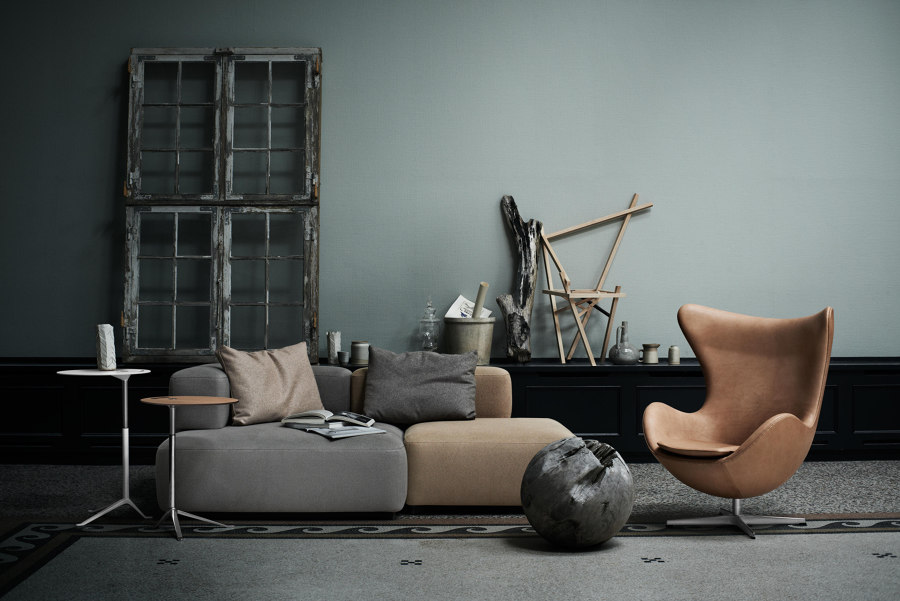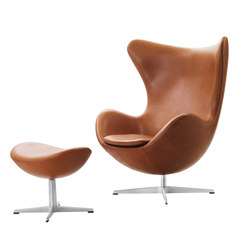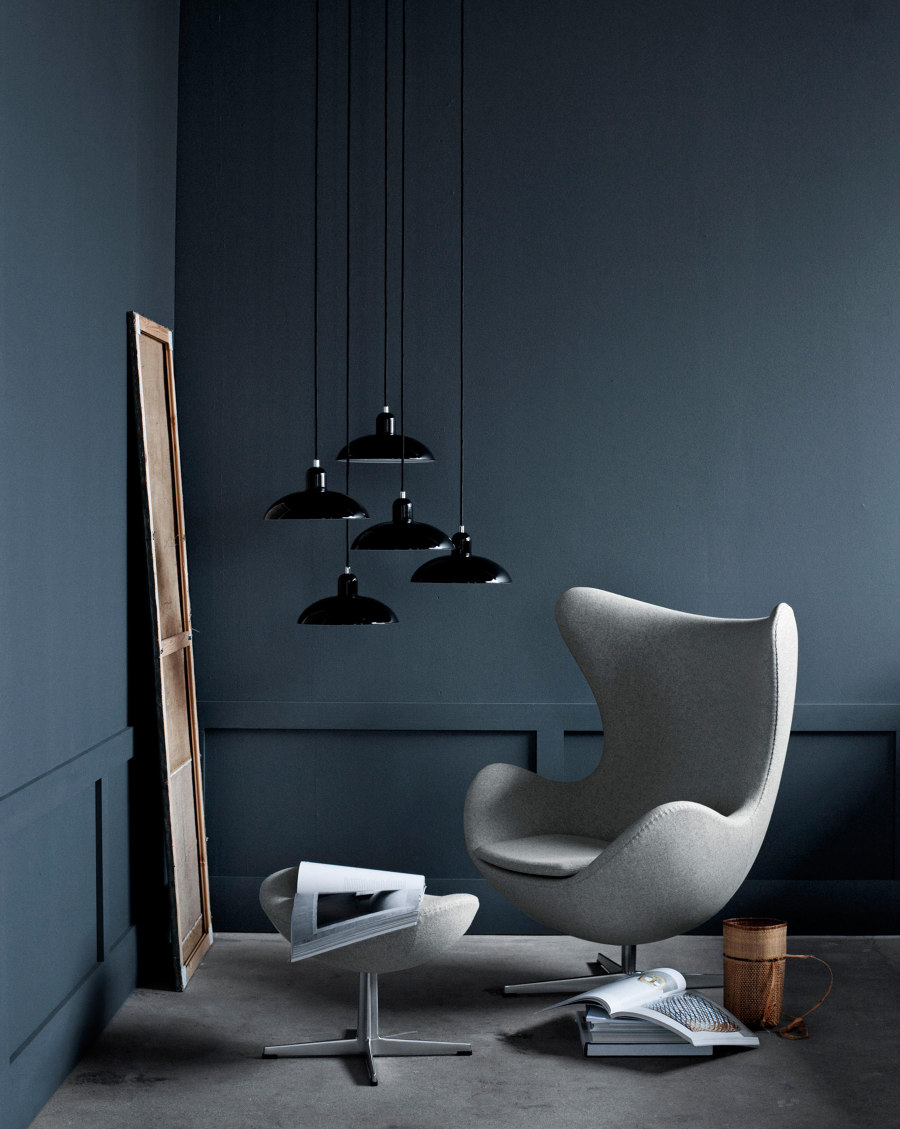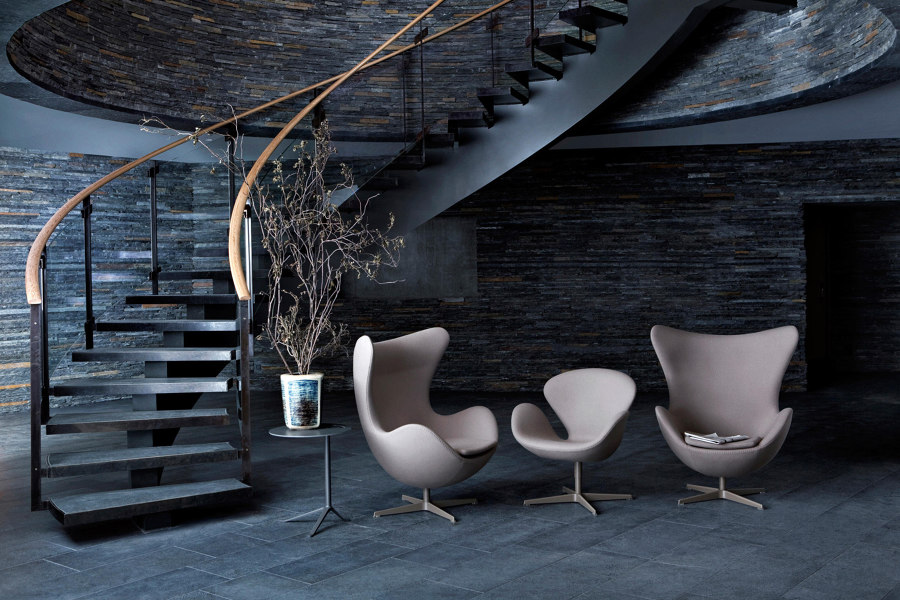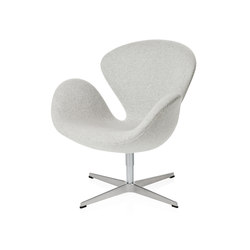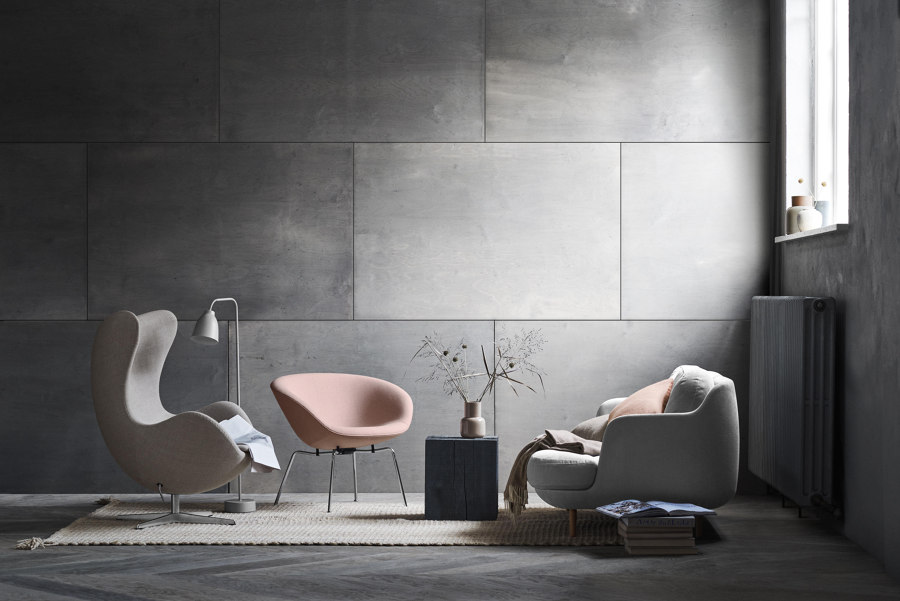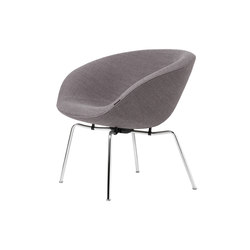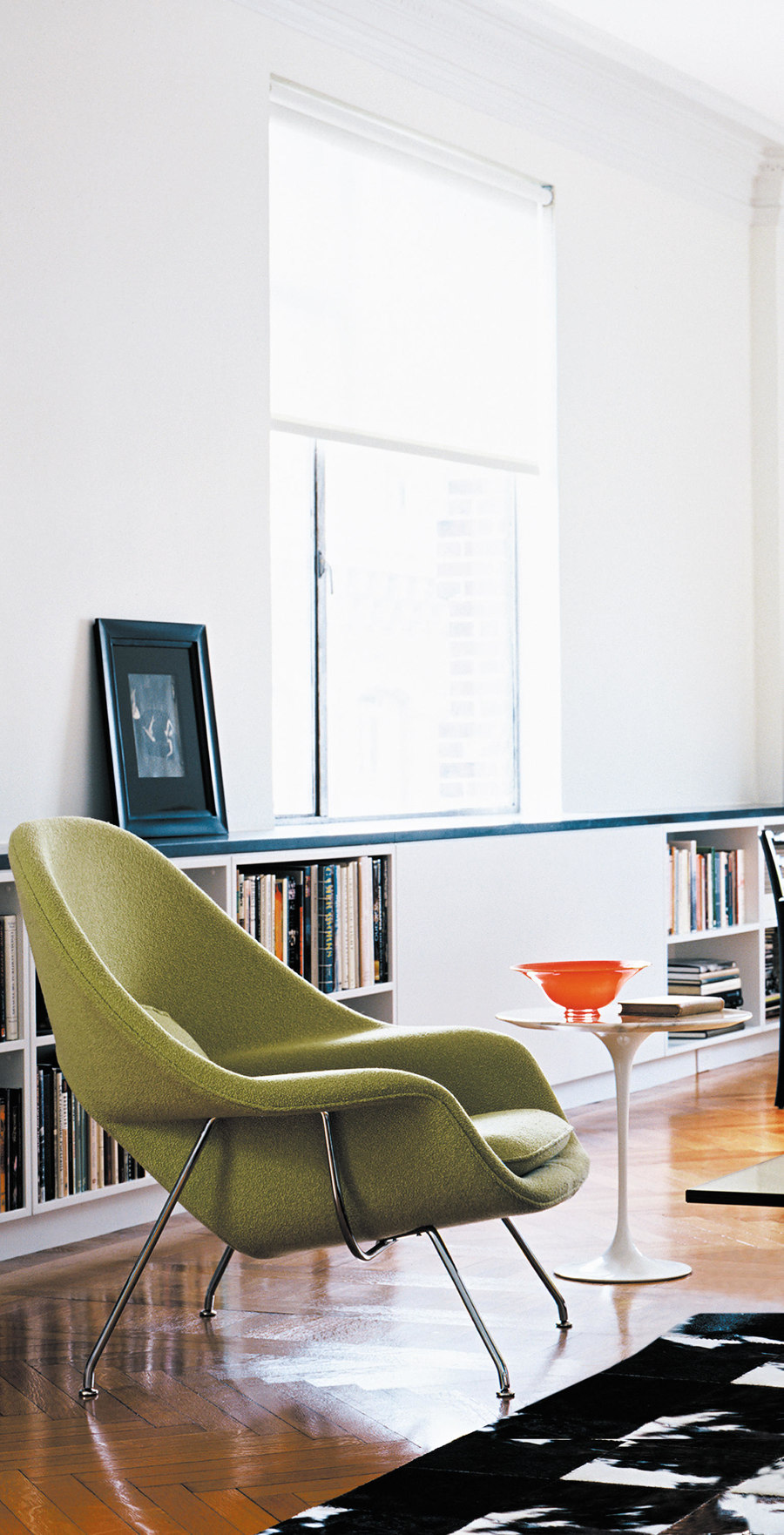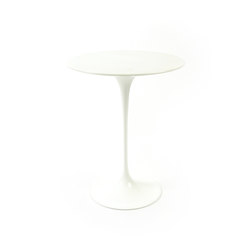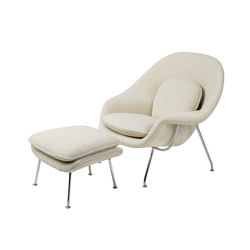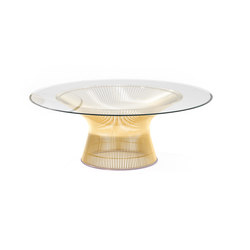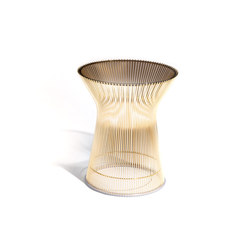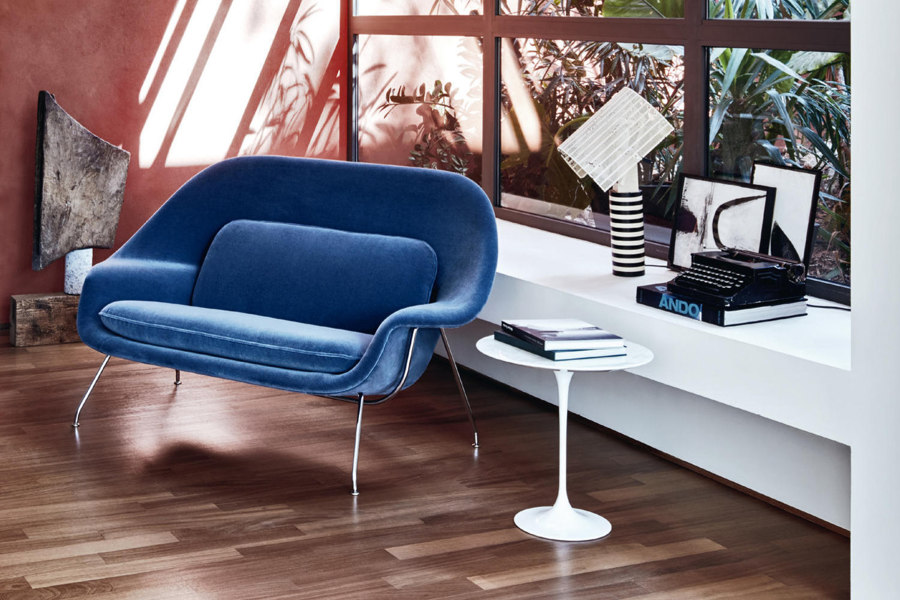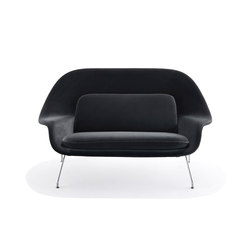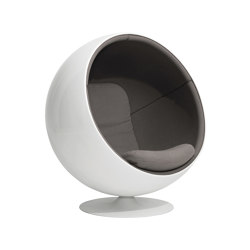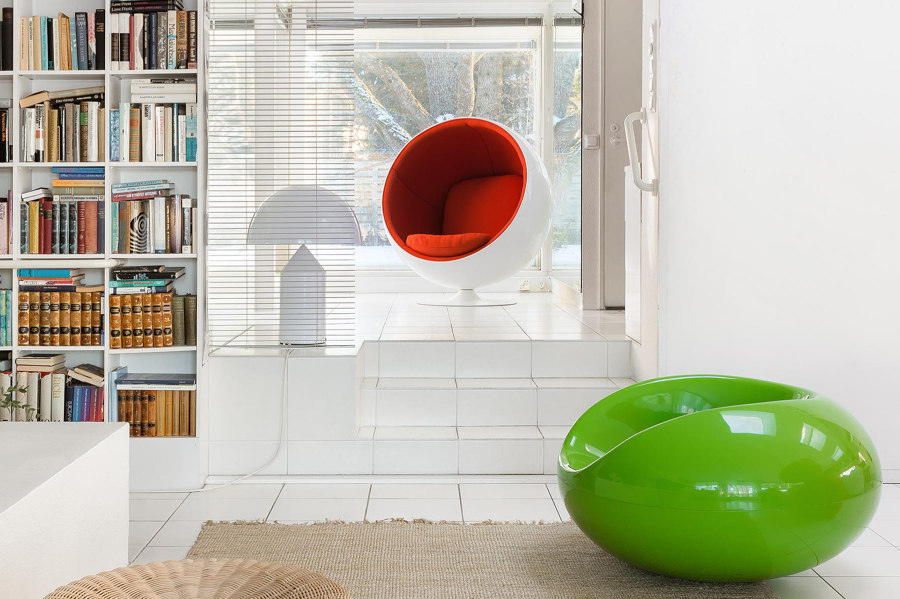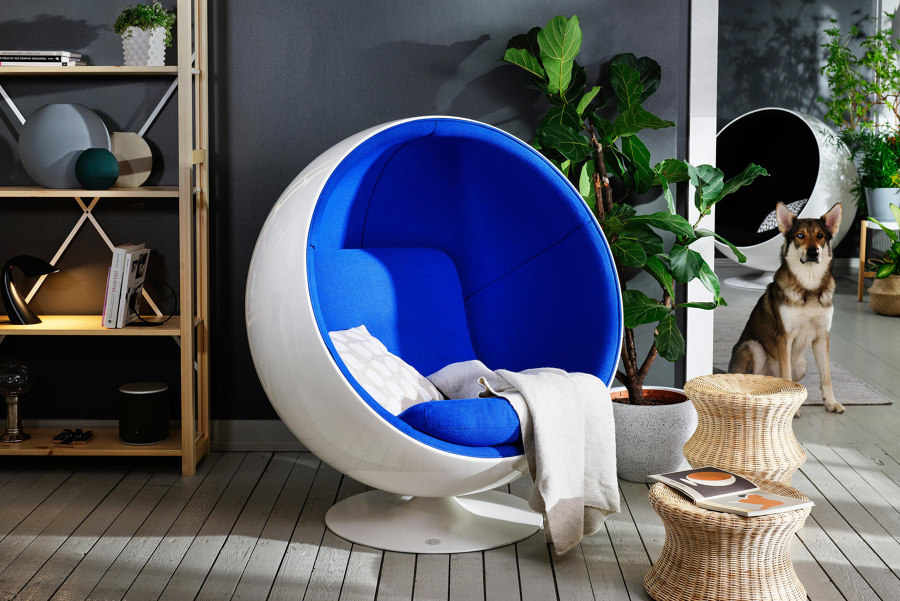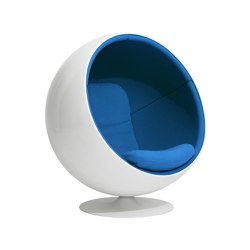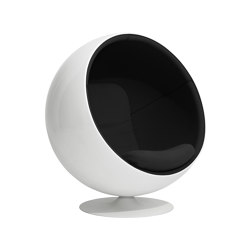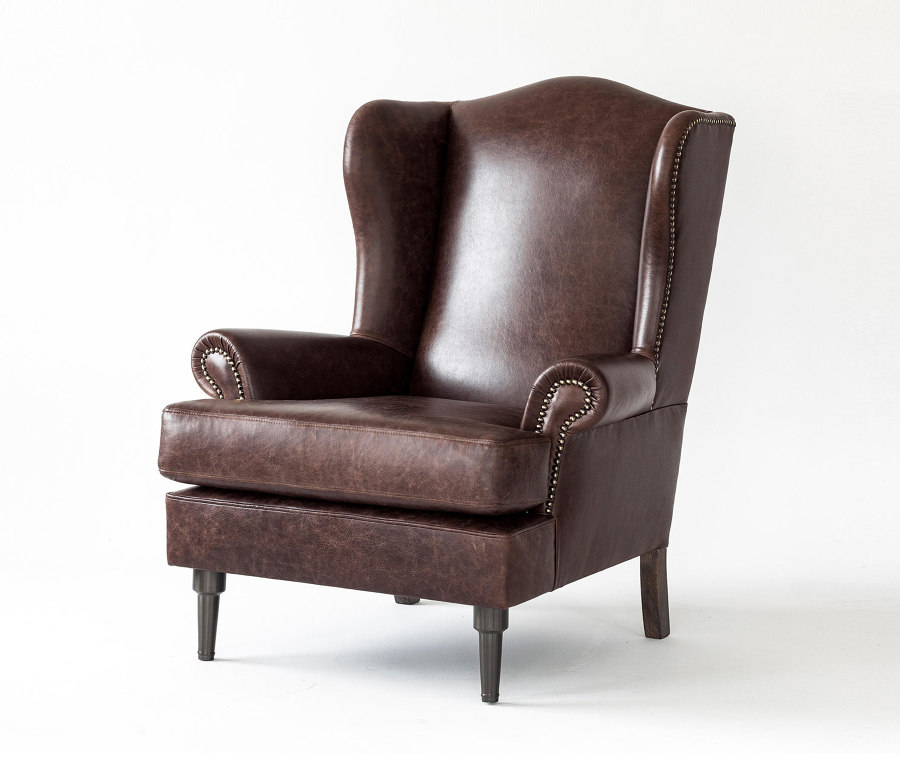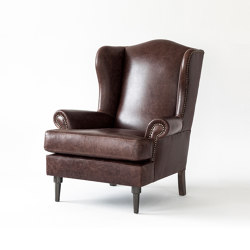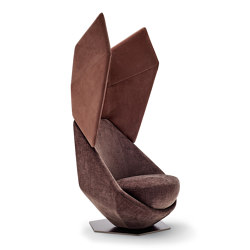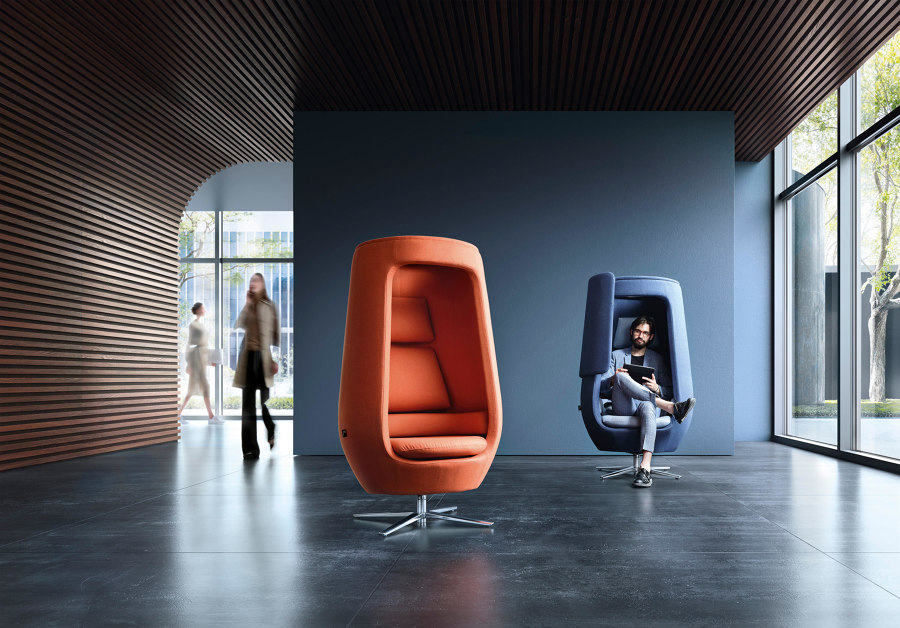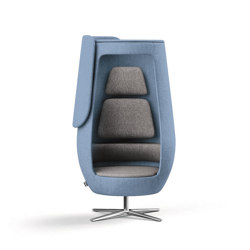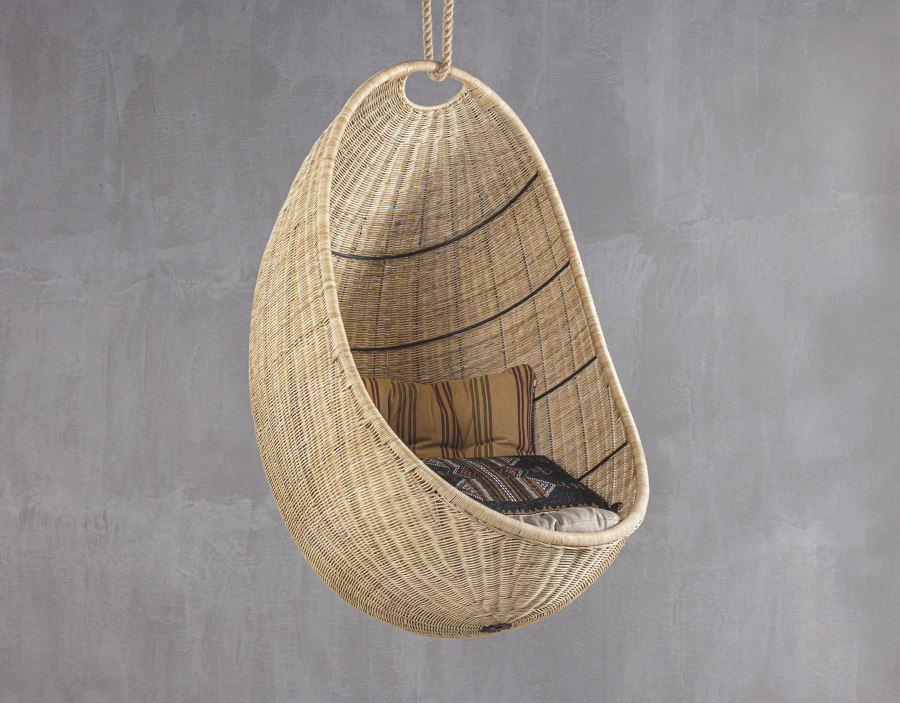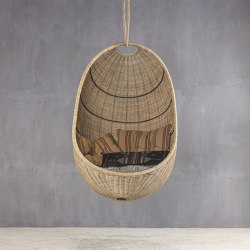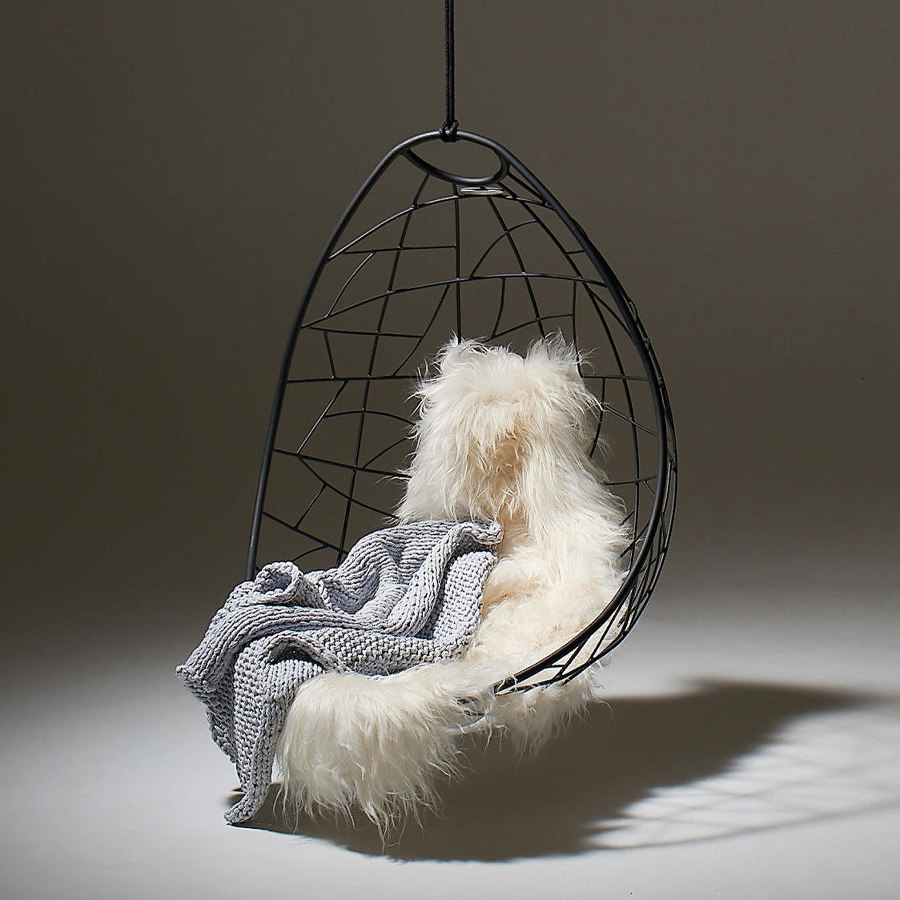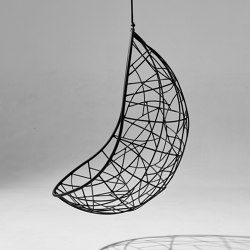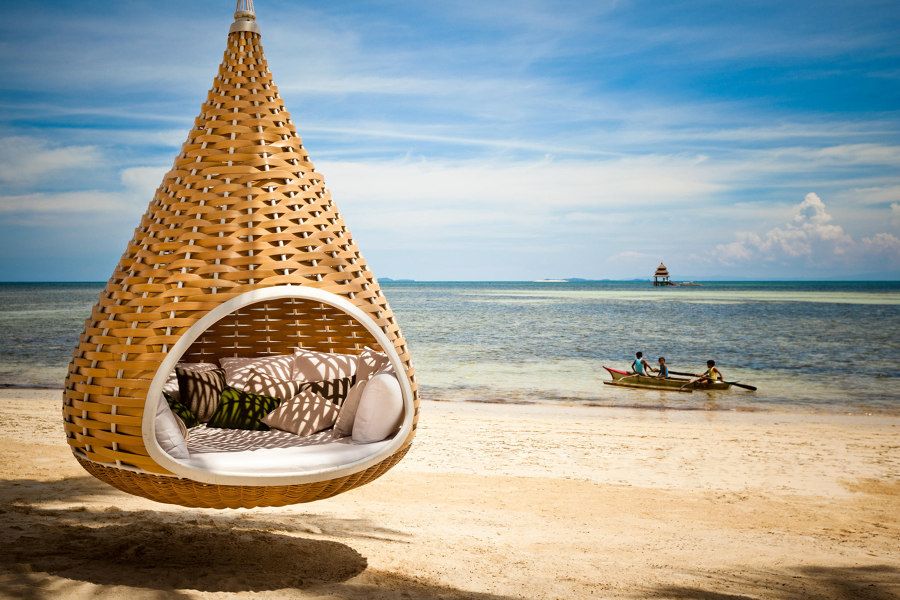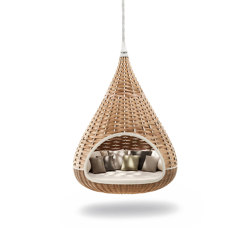The complex evolution of the iconic egg chair
Texte par James Wormald
21.11.23
The simple elliptical form of an egg – and its cosy interior – has inspired designers such as Eero Saarinen, Arne Jacobsen and Eero Aarnio to create some of the most iconic chairs of the past century.
Arne Jacobsen’s Egg™ chair, designed for use in the SAS Royal Hotel’s lobby in Copenhagen in 1958, curves around its user to block out the hectic surroundings
Arne Jacobsen’s Egg™ chair, designed for use in the SAS Royal Hotel’s lobby in Copenhagen in 1958, curves around its user to block out the hectic surroundings
×Which came first, the chicken or the egg?
When taken at face value, of course, the riddle is simple. While chickens were intentionally evolved by selectively breeding wild birds for domestication, the simple elliptical form of an egg reached its own evolutionary peak early, providing cosy, nurturing environments for all developing life forms for millions of years.
The egg chair has become a typology synonymous with individualist style and enclosed comfort
And it’s this simple ovate form – full of organic and mathematical beauty – in combination with the cosy and comfortable cocoon created inside, that has made such a lasting impact on the world of furniture design. Over the past 70 years and counting, ‘egg chair’ has become a typology of seating synonymous with individualist style and enclosed comfort. Here’s a look back at where it all came from.
The Egg™ chair was joined in the SAS Royal Hotel by other Arne Jacobsen designs such as the Swan™ chair (middle), the Pot™ chair (bottom) and the Drop™ chair, along with other specially designed pieces
The Egg™ chair was joined in the SAS Royal Hotel by other Arne Jacobsen designs such as the Swan™ chair (middle), the Pot™ chair (bottom) and the Drop™ chair, along with other specially designed pieces
×The original Egg™ by Arne Jacobsen – created for luxurious comfort
When tasked with the design of seating – along with every other architectural and interior element – for the 5-star SAS Royal Hotel in Copenhagen in 1958, Danish architect Arne Jacobsen looked to the world of nature. Curving organic shapes like those found in Jacobsen’s earlier Series 7 chair manufactured by Fritz Hansen, were already a feature of his inimitable style, and the resulting form of his Egg™ chair would join other nature-inspired designs such as the Swan™, Drop™ and Pot™ chairs – all created for the hotel commission and all produced by Fritz Hansen as well – as mid-century icons.
Eero Saarinen’s Womb chair, joined by a footstool (middle) and settee (bottom) in the collection, was created for Knoll in 1948 with a sweeping form to offer the user endless postures
Eero Saarinen’s Womb chair, joined by a footstool (middle) and settee (bottom) in the collection, was created for Knoll in 1948 with a sweeping form to offer the user endless postures
×Taking it back to the start with Eero Saarinen’s Womb Chair
Another iconic chair to already have been inspired by the curvaceous forms of nature, meanwhile, was Eero Saarinen’s Womb Chair. Sketched at Florence Knoll’s request for a chair to feel like a ‘basket full of pillows’ as its manufacturers Knoll recall, that ‘she could really curl up in’, the pitch for a chair that surrounds the user in comfort was born and the Womb Chair was released in 1948 with a ‘sweeping form [that] offers endless postures,’ shared Saarinen, achieving comfort from the shape of its shell rather than the depth of its cushioning.
The origin of Eero Aarnio’s Ball chair’s shape comes from the practical form of its shell, made from fibreglass. Available in many bold upholstered colours, its white shell also adds contrast
The origin of Eero Aarnio’s Ball chair’s shape comes from the practical form of its shell, made from fibreglass. Available in many bold upholstered colours, its white shell also adds contrast
×The functional spherical form of Eero Aarnio’s fibreglass Ball chair
After Eero Saarinen provided Knoll with a womb-like basket of pillows to curl up in and Arne Jacobsen utilised the form of an egg, cut to form curved yet distinctive arms and wings, Eero Aarnio took the concept of the cocooning enclosure a step further with his Ball chair, designed in 1963. Rather than the enclosed environment inside, however, the simplicity and efficiency of the Ball chair’s exterior were what drove the design. Like the Womb Chair, Eero Aarnio’s Ball Chair is formed from fibreglass – a fairly new material in furniture design at the time – and Aarnio simply decided that ‘the most practical form for a strong and malleable material [like fibreglass] was a sphere.’
The classical lines of Topos Workshop’s Athina Lounger chair (top), the oversized bat wings of Arketipo’s Overdrive chair (middle) and the quiet solitude of Hushoffice’s A11 Lounge chair (bottom)
The classical lines of Topos Workshop’s Athina Lounger chair (top), the oversized bat wings of Arketipo’s Overdrive chair (middle) and the quiet solitude of Hushoffice’s A11 Lounge chair (bottom)
×Past and present existence of cocooning furniture
These examples above were in no way the first chairs to use an enveloping form to enclose comfort and warmth around the user. Wingback chairs with classical lines such as Topos Workshop’s Athina Lounge chair had been favoured as fireside easy chairs since the 1600s, with the folded wings serving to trap warmth from the fire around the user’s head, as well as protecting the neck from draughts.
Wingback chairs’ folded wings served to trap warmth around the user’s head
The use of the wings as a design feature, meanwhile, allows for increasingly ostentatious chairs to be created, without losing any of the functionality of a comfortable seat. With a distinctly chiropteran feel to its wings, for example, the Overdrive chair from Arketipo is perfect for adding a striking ‘Batman’s cave’ look to one’s interior. A more functional use of a wing chair’s extended wings is instead to increase its user’s privacy. Privacy seating such as Hushoffice’s A11 Lounge chair, for example, takes the enclosed form of a cocooning egg chair and adds a sliding front panel, closing the circle of solitude for increased focus.
The contemporary egg chair typology includes hanging cocoons like set.’s Kanso (top), Studio Stirling’s Nest Egg (middle) and even larger versions with multiple berths like DEDON’s NESTREST (bottom)
The contemporary egg chair typology includes hanging cocoons like set.’s Kanso (top), Studio Stirling’s Nest Egg (middle) and even larger versions with multiple berths like DEDON’s NESTREST (bottom)
×The contemporary ‘egg chair’ typology
Bringing it back to the modern day, and the ‘egg chair’ has become a distinct typology all of its own. Usually hung from a ceiling or its own base and often set in outdoor environments, egg chairs like set.’s rattan Kanso swing and Studio Stirling’s Nest Egg collection of swinging chairs encourage users to place their entire bodies – feet and all – inside the cocoon, thus forcing them to curl up in comfort. By squashing up the egg shape at its base, meanwhile, DEDON’s teardrop-shaped NESTREST hanging lounger expands the form and opens up the concept to multiple occupants.
© Architonic
Head to the Architonic Magazine for more insights on the latest products, trends and practices in architecture and design.
